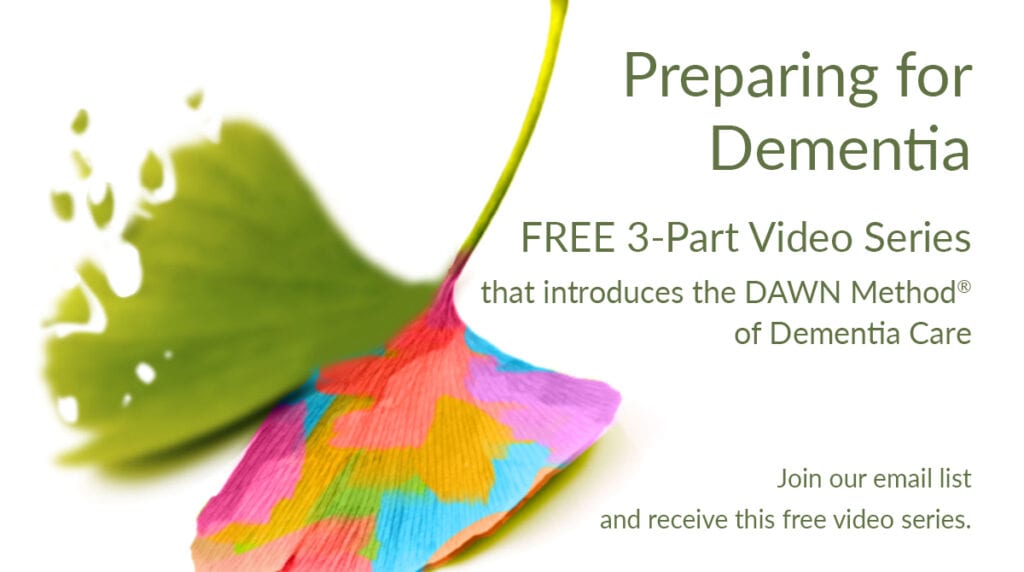Does your loved one with dementia have issues with food, eating or mealtime? Is your dementia patient not eating? Alzheimer’s, dementia and eating issues are common. There are a number of things you can do to make mealtimes easier.
6 tips on how to encourage someone with dementia to eat
1—Dementia and not eating: look for unmet emotional needs first
Here at DAWN, we always look for underlying emotional needs first. Any “behavioral problem” can result from feeling disempowered, embarrassed, confused, or at risk. So empathetically watching your loved one or client and then addressing the emotional need prompting the behavior is always the first step. Once you’ve ruled out emotional needs, here are a few more things to watch for.
2—Dementia can cause a failure to recognize hunger: prompt them by eating with them
People experiencing dementia can lose the ability to either feel hunger or interpret it and understand what to do about the feeling. Inviting a loved one or client to eat with you because you feel hungry will be more successful than telling them they need to eat.
We always eat with our clients. It’s unnatural and awkward to sit and eat while someone stands by. We also ask our clients to help us—to sample tidbits as we’re preparing the food and join us in deciding on seasoning or ingredients. Eating together and working as a team to prepare the meal increases companionship and a sense of value. It’s important to give our loved ones a chance to help us, instead of always being the one who needs help.
3—Don’t put too much food on the plate
Use a brightly colored plate and don’t overload it. Carefully separate small servings of each item, so that the plate is visible between each item. I’ve often had clients refuse to eat from a loaded plate, saying they couldn’t possibly eat that much. Scarcity seems to enhance appeal.
4—Check for vision problems
Be sure to have your loved one’s eyes checked for issues such as cataracts or macular degeneration. However, sometimes even though a person’s vision is not impaired, the brain fails to interpret the information being sent by the optic nerve. We find that when someone seems unresponsive to what is in front of them, pointing to the item or moving the item will sometimes make it seeable.
5—Utensil problems: Model how to use utensils or offer finger food
We should expect our loved ones and clients experiencing dementia to eventually forget what eating utensils are and how to use them. Model use of the fork, spoon, or knife. When modeling stops being helpful, begin presenting foods in mouthful-sized pieces that can be eaten with the fingers. While eating together, chatter about what you are eating and how good it tastes.
6—Too much commotion can distract them from eating
As people progress deeper into dementia, it becomes more difficult for them to interpret sensory stimulation. So if there is background music or television noise, several people talking at once, or lots of coming and going from the table, the person with dementia will be less able to focus on eating. Try to gauge your loved one’s ability to handle sensory stimuli and modify the environment to meet their current level of functioning.
Don’t forget to Hydrate! Dehydration can mimic dementia
We need both food and water. The symptoms of dehydration can mimic dementia. Look for ways to get more water into your loved one or client’s routine. Find something they like to drink and offer it often.
Poor nutrition, low blood sugar, and dehydration all make people physically uncomfortable, and physical discomfort can make us unpleasant company. Looking for ways to maximize nutrition and hydration is another important way we can improve the caregiving relationship.
§
Sign up for our newsletter and free video series
Sign up for our monthly newsletter and get more advice on how to help someone experiencing dementia. As a bonus, you’ll get our free video series, “Preparing for Dementia.”


